Dispatches from the Front: Primary Grades
My children pop in the front door from school and give cheerful but vague reports about their day. In response to my questions about how school was, my fifth-grader and second-grader toss adjectives my way—“Good! Interesting! Fun!”—and then raid the ‘fridge and wander off to change out of their uniforms. We do get to the heart of their learning at other times: For example, near the end of the last academic year, my husband and I were talking about North Korea and our then-fourth-grader piped up, “Oh! North Korea’s citizens should write a Magna Carta!” The rich and lively conversation that ensued reminded me (again) of the extraordinary value of this education.
But sometimes, when we’re not deep in discussion, I just want to know their take on what they’ve been doing all day. To satisfy my curiosity—and hear from ACA students about these first few weeks of school—I visited several classes to ask. And guess what? When there’s no fridge to raid, ACA students have a lot to say!
My first stop: kindergarten. The students told me that the best thing they’ve learned so far is cursive letter A, but they suspect that cursive letter Z is going to be pretty exciting too. They gave high marks to Mrs. Alvis for being “the greatest teacher ever,” and I heard a lot about PE games like frisbee and “Sharks and Minnows.” (If you’d like a play-by-play account, set aside at least 45 minutes and visit kindergarten.) Mia summed up her classmates’ sentiments: “I feel happy at ACA.”
I caught the first-graders on the playground, where they were eager to chat about crabs. “I thought they fought with both claws, but they only have one fighting claw and they use the other one to eat,” James told me, eyes wide. Isaac added, “If they get an eye cut off, it takes a year to grow back.” Haley piped up to teach me that crabs come in a lot of colors: red, brown, green, yellow, or blue. We all agreed that God was being really creative when He designed crabs. When I asked about the funniest part of first-grade, they said that phonemic awareness is hilarious. Confused? I was, too. But Kate explained that to practice their phonograms, Mrs. Molen removes one phonogram from a word and replaces it with another sound. “So we get to say silly words that aren’t real!” Sounds like fun to me.
A short while later, the second-graders gathered around me to talk about…botany. Emery reported that lately, they’ve been learning about “nonvascular plants, like moss.” (Someone had to explain to me what that meant.) “Moss is sort of like a sponge,” Harrison said. “It soaks up the water, but it doesn’t have roots.” Gemma pointed out that in art, they’ve been drawing flowers—a tie-in to their science curriculum that she thinks is “awesome.” And speaking of awesome, all second-graders said that Mrs. Trujillo does the best voices for read-aloud books. The Skippyjon Jones series is a current favorite.
My whirlwind tour through the primary grades reminded me of the wonder that marks these years of learning. God seems to have created young minds to soak up the richness of new knowledge. Crabs and cursive, moss and phonograms, plant drawings and PE games, all doled out by beloved teachers who invent learning games and do funny voices during read-aloud: This is the good stuff, and our kids know it. They don’t just know the information; they know that it’s good, and as they experience the goodness of it, they begin to love it; and as they love it, they share it. And when they shared it with me, they blessed me tremendously.
I’ll be continuing my conversations with students and sharing them here from time to time. I hope to give us all a glimpse into the daily life of our students at ACA and remind us how in this setting, the small wonders and the elements—the “grammar”—of knowledge add up to great big love for the Lord and for the story of the world, crabs and all.
----
Hilary Oswald is an ACA mom, ACA board vice-chair, and editor for 5280 Home and 5280 Health.
